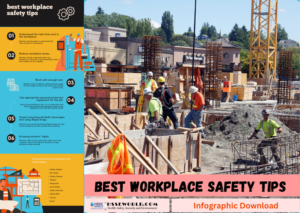Photo of the day:5 keys for effective Self-Management in lone worker safety
Lone workers are those who work by themselves without close or direct supervision. Anybody who works alone, including contractors, self-employed people, and employees, is classed as a lone worker.
Lone workers include:
- people in fixed establishments where only one person works on the premises, e.g. in small workshops, kiosks, petrol stations, shops, and home-workers
- people work separately from others, e.g. in factories, warehouses, some research and training establishments, leisure centers or fairgrounds
- people who work outside normal hours, e.g. cleaners, security, special production, maintenance or repair staff, etc.
- people who work working away from their fixed base, e.g. on construction, plant installation, maintenance and cleaning work, electrical repairs, lift repairs, painting and decorating, vehicle recovery, etc.
- agricultural and forestry workers
- service workers, e.g. rent collectors, postal staff, social workers, home helps, district nurses, pest control workers, drivers, engineers, architects, estate agents, sales representatives, and similar professionals visiting domestic and commercial premises.

Are people legally allowed to work alone?
Yes. There is nothing specific in general legislation that prohibits a person from working alone. Section 19 of the Safety, Health, and Welfare at Work Act 2005 requires the employer to undertake a risk assessment, and so this shall determine whether or not an employee may work alone. Therefore, in general, an employer must assess whether an employee is at significantly higher risk when working alone. However, employers must be aware of any specific legislation on lone working, which may be applicable to their specific industry, e.g. supervision in diving operations, vehicles carrying explosives.
What kind of hazards might lone workers be exposed to?
Hazards that lone workers may encounter include:
- accidents or emergencies arising out of the work, including the inadequate provision of first aid
- sudden illnesses
- inadequate provision of rest, hygiene, and welfare facilities
- physical violence from members of the public and/or intruders
What responsibilities do lone workers have?
The employer holds the main responsibility for protecting the safety and health of lone workers. Nonetheless, lone workers themselves have a responsibility to help their employer fulfill this duty, and so they must:
- Take reasonable care to look after their own safety and health
- Safeguard the safety and health of other people affected by their work
- Co-operate with their employer’s safety and health procedures
- Use tools and other equipment properly, in accordance with any relevant safety instructions and training they have been given
- Not misuse equipment provided for their safety and health
- Report all accidents, injuries, near-misses, and other dangerous occurrences
What happens if the risk assessment shows that it is not possible for the work to be carried out safely by a lone worker?
If the risk assessment shows that it is not possible for the work to be done safely by a lone worker, arrangements for providing help or backup should be put in place. Where a lone worker is working at another employer’s workplace, that employer should inform the lone worker’s employer of any risks and the control measures to be taken. This also helps the lone worker’s employer to assess the risks.
What control measures could be implemented to minimize the risk to lone workers?
The risk assessment should prescribe control measures to be implemented in order to eliminate/minimize the identified risks. Such control measures may include:
- communication is very important: a mobile phone, telephone or radio
- controlled periodic checks
- automatic warning devices, e.g. panic alarms, no movement alarms, automatic distress message systems, i.e. pre-recorded message sent if not actively canceled by the operative, etc.
- instruction and training in proper procedures, e.g. code words for potentially violent situations when combined with mobile phone communication.
- use of Personal Protective Equipment (PPE)
- health surveillance
- first-aid kits and training
- implementing Standard Operating Procedures (SOP’s)
- locking and securing a place of work
- implementing correct incident reporting procedures
- provision of counseling
What issues should the employer address when planning safe working arrangements for lone workers?
When establishing safe working arrangements for lone workers, employers need to know the law and standards that may apply to their specific work activity. They must then assess if the requirements of that work activity can be met by people working alone. Issues that need to be addressed when planning such safe working arrangements are:
1. Can the risks of the job be adequately controlled by one person?
Lone workers should not be at more risk than other employees. This may require extra risk control measures. Precautions should take account of normal work and foreseeable emergencies, e.g. fire, equipment failure, illness, and accidents. Employers should identify situations where people work alone and ask questions such as:
- Does the workplace present a special risk to the lone worker?
- Is there a safe way in and a way out for one person? Can any temporary access equipment that is necessary, such as portable ladders or trestles, be safely handled by one person?
- Can all the plant, substances, and goods involved in the work be safely handled by one person? Consider whether the work involves lifting objects too large for one person or whether more than one person is needed to operate essential controls for the safe running of equipment.
- Is there a risk of violence?
- Are women especially at risk if they work alone?
- Are young workers especially at risk if they work alone?
2. Is the person medically fit and suitable to work alone?
Check those lone workers have no medical conditions which may make them unsuitable for working alone. Seek medical advice if necessary. Consider both routine work and foreseeable emergencies, which may impose additional physical and mental burdens on the individual.
3. What training is required to ensure competency in safety matters?
Training is particularly important where there is limited supervision to control, guide, and help in situations of uncertainty. Training may be critical to avoid panic reactions in unusual situations. Lone workers need to be sufficiently experienced and to understand the risks and precautions fully. Employers should set the limits to what can and cannot be done while working alone. They should ensure employees are competent to deal with circumstances that are new, unusual, or beyond the scope of training, e.g. when to stop work and seek advice from a supervisor and how to handle aggression.
4. How will the person be supervised?
Although lone workers cannot be subject to constant supervision, it is still an employer’s duty to ensure their safety and health at work. Supervision can help to ensure that employees understand the risks associated with their work and that the necessary safety precautions are carried out. Supervisors can also provide guidance in situations of uncertainty. Supervision of safety and health can often be carried out when checking the progress and quality of the work; it may take the form of periodic site visits combined with discussions in which health and safety issues are raised.
The extent of supervision required depends on the risks involved and the ability of the lone worker to identify and handle safety and health issues. Employees new to a job, undergoing training, doing a job which presents special risks, or dealing with new situations may need to be accompanied at first. The level of supervision required is a management decision, which should be based on the findings of risk assessment, i.e. the higher the risk, the greater the level of supervision required. It should not be left to individuals to decide whether they require assistance.
What provisions should be in place for lone workers in the case of an emergency?
- Lone workers should be capable of responding correctly to emergencies. Risk assessment should identify foreseeable events.
- Emergency procedures should be established and employees trained in them.
- Information about emergency procedures and dangerous areas should be given to lone workers who visit your premises.
- Lone workers should have access to adequate first-aid facilities and mobile workers should carry a first-aid kit suitable for treating minor injuries.
- Occasionally, the risk assessment may indicate that lone workers need training in first aid.
Are there special factors to be considered for lone workers working at a remote location or/and in isolation?
For a lone worker at a remote location, the following factors must be considered:
- how long should the work take and how frequently should the worker report in
- has the worker a safe means of travel to and from the location, especially out of normal hours
- is there access to adequate rest, hygiene, refreshment, welfare, and first aid facilities
- can emergency services approach the location without hindrance Procedures for responding to ‘worst-case scenario
What if I am a lone worker, working from home?
An employer has the same responsibility for the safety and health of employees who work from home as for any other employees. This covers the provision of supervision, education, and training and the implementation of sufficient control measures to protect the homeworker. The employer should accept liability for accident or injury of a homeworker as for any other employee.
Download the photo
More photos:
- Photo of the day: 10 Essential Safety Tips for Driving in Hot Weather Conditions
- Photo of the day: best workplace safety tips
- Photo of the day: The Importance of Stop Work Authority in Maintaining Workplace Safety
- Photo of the day: Tomorrow’s Reward for Working Safely Today: Cultivating a Culture of Safety
- Photo of the day: Preventing slips and trips at work
- Photo of the day: Learn the DRSABCD action Plan
- Working with Electricity Electrical Accidents Guide for Electrical Workers
- Photo of the day: Hearing Protection Device Selection
- Photo of the day: If An Earthquake Shakes You-Infographic free
- Fire Safety Posters Free Download
- Photo of the day: First Aid for Electrical Burns-Infographic free
- Infographic: First Aid for Cuts and Scrapes free download
- Photo of The day: Work Safe with Lasers-Laser Safety free
- Photo of the day: Working Safely with chemicals and chemical Management
- Photo of the day: Safe work practices when using MEWPs ( updated)
- Photo of the day: Preventing Common Kitchen Hazards
- Photo of the day: Safe handling of Gas Cylinders and lecture bottles
- Photo of the day: Forklift Stability Triangle
- Photo of the day: Defective Tools Safe Work Practice
- Photo of the day: Lift With Your Legs Not With Your Back
- Photo of the day: First Aid for burns
- Photo of the day: The 7 Principles of HACCP
- Photo of the day: Working Safely with Suspended Loads
- Photo of the day: Heat Stroke First Aid and safety posters
- Photo of the day: Near-Miss Reporting and Posters
- Photo of the day: Ergonomic chair and office chair safety tips
- Photo of the day: Whole Body Vibration
- Photo of the day: Substation Safety Equipment
- Photo of the day: Bypassing Safety Controls Rules
- Photo of the day: Lightning Safety Tips
- Photo of the day: Overhead Power lines Clearance
- Photo of the day: Floor Marking
- Photo of the day: Types of Foot Protection
- Photo of the day: Types of Hand Protection
- Photo of the day: Lockout and Tagout Safety
- Photo of the day: Fall Protection Plans
- Photo of the day: Flood Safety Tips
- Photo of the day: Read All Labels Work safe
- Photo of the day: Run Project safely with Crane Hand Signals
- Photo of the day: Flagman and Traffic control
- Photo of the day: Managing Risks of Exposure to Solvents in the workplace
- Photo of the day: Scissor Lift Safety
- Photo of the day: HSE Bulletin Board
- Photo of the day: Arc-Fault Circuit Interrupters (AFCI)
- Photo of the day: Safe use of ladders and step ladders
- Photo of the day: Concrete Truck Driver Hand Signals
- Photo of the day: Extension Cord Safety Tips
- Photo of the day: Protect your Head
- Photo of the day: choosing the right Anchorage
- Photo of the day: Work-Related Asthma
- Photo of the day: Top FIVE Heavy Equipment Construction Site Safety Tips
- Photo of the day: sun safety in the workplace
- Photo of the day: Cannabis and Impairment in the Workplace
- Photo of the day: Position for safety and comfort-Safety Tips
- Photo of the day: Generator Safety
- Photo of the day: Controlling COVID-19 in the Workplace-Physical Barriers
- Photo of the day: Manual Material handling
- Photo of the day: Personal Protective Equipment last resort
- Photo of the day: WHMIS 2015 – Pictograms
- Photo of the day: Indoor Air Quality
- Photo of the day: Noise in the affected workplace
- Photo of the day: Fatigue at Work
- Photo of the day: Don’t be Driven to Distraction
- Photo of the day: working in heat and Humidex Rating
- How to use Plate Clamps Safely: Safety Moment#34
- Photo of the day: Sitting at work
- Photo of the day: 5 ways to reduce the risk of Slipping and Tripping
- Photo of the day: Preventing the spread of contagious illness
- Photo of the day: Incident Investigations
- Photo of the day: 10 Scaffold Safety Essentials
- Photo of the day: Effective Health and Safety Committees
- Photo of the day: New worker Orientation & Safety Orientation checklist
- Photo of the day: Workplace Inspection
- Photo of the day: musculoskeletal disorders
- Photo of the day: Emergency preparedness in the workplace
- Photo of the day: Mental health in the workplace
- Photo of the day: Trenching Safety Tips That Can Save a Life
- Photo of the day: Dangerous Goods Classes
- Photo of the day: Safety Equipment for Confined Spaces
- Photo of the day: Tips to reduce Heat stress in the workplace
- Photo of the day: hierarchy of controls
- Your steps to chemical safety
- H2S Gas and how to handle its Emergency
- Photo of the day: Importance of Mock drill and Fire Action Emergency Procedure
- Photo of the day: Choosing the Right Face Mask and the difference between a respirator and face mask
- Photo of the day: Confined space safety Precautions
- Breath Safely: The Proper Use of Respiratory Protection
- Photo of the day: Electric shock survival
- Photo of the day: Chemical Spill Emergency Response
- Photo of the day: Construction Site fire Safety
- Photo of the day: Confined Space rescue
- Photo of the day: Conveyors Safety Tips
- Photo of the day: 5 Essential outcomes of an effective leadership survey process



